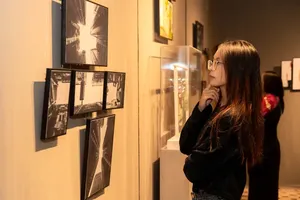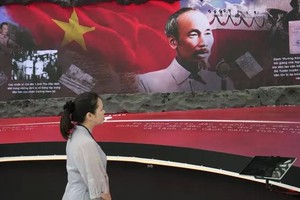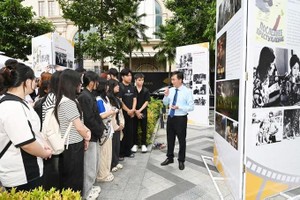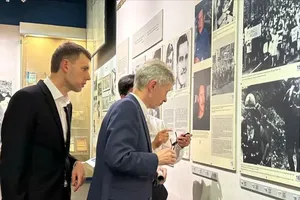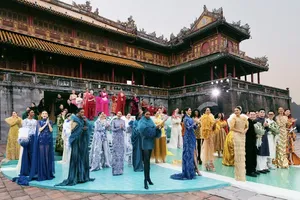Even under the highest levels of protection, national treasures remain vulnerable. It's a challenge heritage institutions around the world continue to face.
Force majeure situation

In the recent concerns over the protection of national treasures, several experts and art curators have called for the establishment of a security force commensurate with the cultural and historical value of these artifacts. The classification of national treasures and the division of permanent and periodic exhibitions should be implemented to ensure the highest level of safety for these irreplaceable treasures.
Ultimately, the most critical factor remains human awareness, a challenge faced not only in Vietnam but around the world.
In late May, China, home to some of the world's most significant cultural heritage sites with world-class conservation systems, witnessed a troubling breach at the Mausoleum of Emperor Qin Shi Huang in Xi’an. A domestic tourist, later identified as mentally ill, climbed over a fence and jumped into a section of the world-famous display of China’s terracotta army, damaging two ancient clay warriors. The ancient figures, dating back over 2,000 years and classified as second-level protected national relics, were damaged in the incident.
The Mona Lisa, one of the most iconic masterpieces in art history, is protected under strict, high-level security measures, including bulletproof glass, advanced surveillance equipment, and a dedicated security team. Yet even such precautions have not rendered it immune to modern-day threats.
In early 2024, climate activists threw soup at the protective glass around the Mona Lisa at the Louvre Museum in France. Over the years, the painting has faced numerous acts of vandalism, ranging from being pelted with stones and teacups to being smeared with cake. Though none of these actions have caused direct damage to the masterpiece, the risks remain ever-present.
Surveillance technology solutions and security personnel remain the most advanced and practical measures currently available to safeguard national treasures. However, there are still risks.
A curator in Ho Chi Minh City said that he once visited the terracotta warriors at the Mausoleum of Emperor Qin Shi Huang. Nearly 3,000 security guards stand at very high density in the area. But in the case of a mentally unstable tourist, it's almost impossible to react in time.
Prevention, preservation, and risk forecasting
Experts said that most museums and heritage sites in Vietnam still exhibit original national treasures and rare artifacts. Original displays not only affirm the significance of a collection but also evoke a genuine emotional response from visitors. Therefore, investing in advanced technological measures aimed at safeguarding these original artifacts is essential, ensuring their absolute security and the preservation of their authenticity.
Artifacts on display, composed of varying materials such as sandstone, bronze, and wood, each possess distinct mechanical and chemical properties. As a result, they require environments tailored to the specific preservation needs of each material category. In particular, centuries-old wooden and metal objects have degraded over time due to oxidation, decomposition, and the influence of a hot and humid environment. Additionally, they are frequently threatened by infestations from insects such as termites and wood-boring beetles.
Dr. Hoang Anh Tuan, Director of the Ho Chi Minh City Museum of History, which is home to 12 national treasures, said that prevention and conservation are crucial steps in ensuring the longevity of artifacts and creating an ideal environment for the objects through meticulous control of environmental factors such as temperature and humidity while maintaining their stability.
Currently, the museum lacks sufficient funding to establish a specialized care and preservation program for the national treasures, which presents significant challenges in meeting the strict technical standards required for environmental control. These treasures are directly impacted by environmental factors. Fluctuations in temperature due to abnormal weather can cause molecular expansion and contraction in the artifacts, fostering the growth of fungi, mold, and insects, which contribute to deterioration and compromise the durability of these invaluable items.
Dr. Pham Quoc Quan, a member of the National Cultural Heritage Council and former Director of the National Museum of History, emphasized the importance of comprehensive artifact preservation strategies to ensure long-term durability. In addition to protective measures, it is essential to develop detailed response scenarios to promptly address any adverse or unexpected situations, such as human interference, natural disasters, or technical failures. Additionally, there must be an efficient, direct, and rapid communication and connectivity mechanism among all individuals and agencies responsible for safeguarding artifacts and national treasures.

